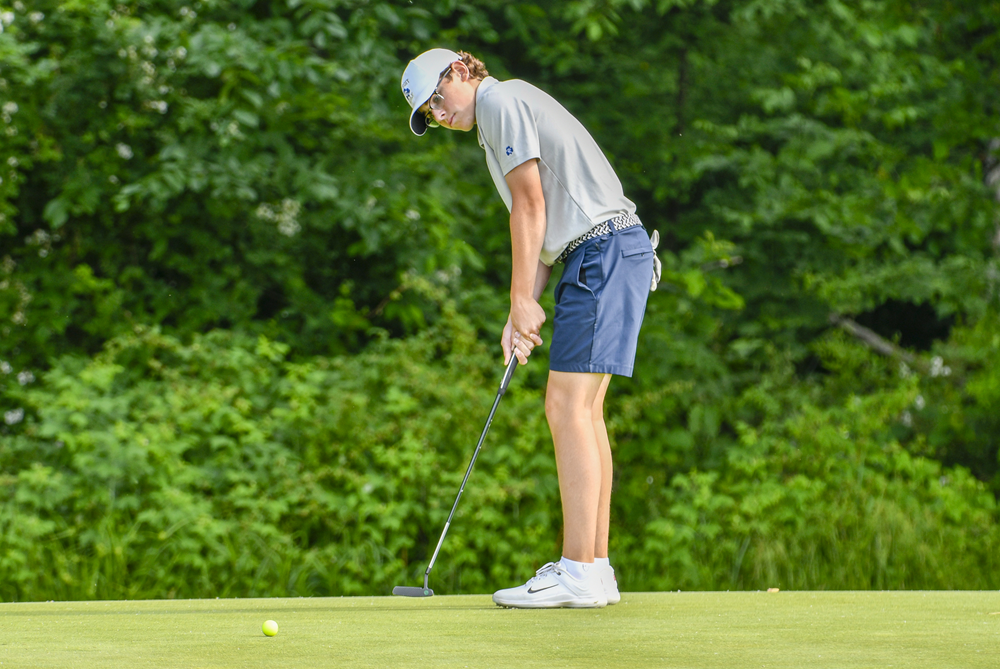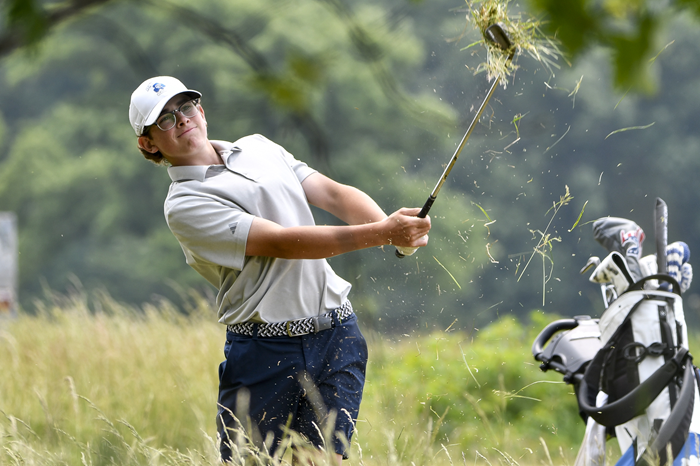
Keep on Coaching
February 1, 2013
By Geoff Kimmerly
Second Half editor
A few weeks ago, I finally got my first chance this season to watch a friend coach his basketball team. After guiding some others at the lower levels, this is his first time running the varsity – something he wasn't sure he wanted to do with a 1-year-old just learning to walk, but a challenge he ended up taking on to the benefit of all those involved.
Simply put, he’s good. I've seen a lot of teams and a lot of coaches over the past 15 years, and although I wouldn't know much of what to do if I were walking the sideline, I felt pretty qualified in telling him I was impressed – even if he didn't buy that I was offering an unbiased opinion. The best news is he’s gone from not sure about this a few months ago to talking about next season.
We know, at least anecdotally, that coaching continues to get more challenging. The time commitment has grown substantially to make running a program a year-round endeavor in a lot of sports at a lot of schools.
That commitment – especially for coaches with children of their own – was a main reason referred to in a New Haven Post-Chronicle story Saturday that noted 23 football coaching openings in Connecticut at one point this offseason. That state has 146 football teams – meaning roughly 15 percent will have new leaders this fall.
And that got me thinking about my friend, about how glad I am he’s given this a shot, and how I've seen so many others either not do so, or not stick around long despite having some pretty nice success.
A study published last winter in Interscholastic Athletic Administration magazine – a product of the National Interscholastic Athletic Administrators Association – noted some predictable results of a study that sought to determine the biggest challenges faced by first-year high school coaches.
The toughest according to the study was balancing the demands of coaching and teaching, experienced by nearly half the respondents – 98 percent of which coached high school teams and 81 percent of which are teachers.
The next six reasons all were noted by at least 30 percent of those in the study – personal fatigue, securing community support, securing and caring for facilities and equipment, parental contact, keeping non-starting players motivated, dealing with schedule interruptions and motivating athletes to achieve consistent, peak performance.
Nothing there is earth-shaking, and most if not all of these challenges are faced by high school coaches regardless of how long they've been in the field. But I got a little more perspective from some of the 32 items that ranked as least challenging to the first-year leaders – keeping in compliance with state and league regulations, dealing with substance abuse issues, teaching sport skills and creating a positive team atmosphere – things that seem most important, and yet appear to be easiest to do. I’m not sure what that tells us – but I think it tells us something.
Click to check out the entire three-page breakdown of the study, plus the researchers’ recommendations to remedy some of what first-year coaches face.
Giving back to Saginaw
I love reading about high-level athletes – like a star-studded group of alums from Saginaw – giving back to where they got their starts.
Pittsburgh Steelers star LaMarr Woodley made a big impact before the start of this school year by donating $60,000 to cover all participation fees for athletes in his former school district. The Saginaw News’ Hugh Bernreuter writes today about how Woodley (Saginaw High), the Philadelphia 76ers’ Jason Richardson (Saginaw Arthur Hill) and former Oakland Raiders standout Stu Schweigert (Saginaw Heritage) have combined to give more than $865,000 back to their home communities.
Bernreuter also mentions the non-monetary contributions of the Golden State Warriors’ Draymond Green (Saginaw High) and former Indianapolis Colts receiver Blair White (Saginaw Nouvel).
Click to read more about it.
Quote(s) of the Week
While rifling through more papers on my desk, I found an article from the Washington Post from Sept. 2011 titled “How high school sports save our schools.” I was drawn to it in part because I spent more than a decade in a newsroom, and it was a piece by a reporter covering education who instead of reporting on school boards and the like, delved into the importance of interscholastic athletics to education as a whole.
He spoke of how participation continues to grow even as resources dwindle, and of data supporting that extracurriculars like sports are more effective than academic classes in teaching leadership, teamwork, time management and “other skills crucial for success in the workplace.” Later, he mentioned a study noting that those who participate in extracurriculars earned more a decade later.
Click here to read the entre piece. These passages struck me most.
“Coaches might be the only faculty members still allowed by our culture and educational practice to get tough with students not making the proper effort. They have the advantage of teaching what are essentially elective non-credit courses. They can insist on standards of behavior that classroom teachers often cannot enforce because the stakes of dismissing or letting students drop their courses are too high. …
“Students do better in activities they choose. If we provide more of them, led by committed adults … that can make a difference. We know the bad news about education. Dropout rates are high. Achievement scores are stagnant. But sports participation is going up, despite pressure to cut it back. Let’s cheer about that and look for a way to draw in more students.”

Back to Full Strength, Menser Eager to Show Full Talent with Title Pursuit
By
Keith Dunlap
Special for MHSAA.com
June 6, 2024
For a while this spring, Detroit Catholic Central senior golfer Julian Menser probably wondered if he was going to be spending more time in the hospital than on the golf course.
 Up until the initial days of May, Menser had a terrible bout of mononucleosis, and treatment days were more common than sessions on the driving range or putting green.
Up until the initial days of May, Menser had a terrible bout of mononucleosis, and treatment days were more common than sessions on the driving range or putting green.
“After I was done with the symptom part, I would be out practicing and I’d all of a sudden get hit with random fatigue,” said Menser, who said he also suffers from asthma. “It would hijack what I was trying to get done.”
Fortunately, it appears as if his senior season will have a happy ending after the slow start.
Menser is not only healthy, but is playing superb golf heading into this weekend’s Lower Peninsula Division 1 Final at Bedford Valley in Battle Creek.
The happiest conclusion would be for Menser to close his high school career with an individual championship – and the way he’s been playing, it’s quite possible.
On May 15 at the Oakland County tournament, Menser fired a 7-under par round of 65 at Fieldstone Golf Club in Auburn Hills to win the medalist honor going away.
Last week in his Regional tournament at Twin Lakes, Menser shot a 6-under par round of 66 to win the medalist honor and lead the Shamrocks to the team title.
Signed to play next for Michigan State, Menser is rightfully full of confidence.
 “I’m playing well, but I just try to look at it that golf can change and how you are playing can change every single morning when you wake up,” Menser said. “I don’t really look at it as, ‘I shot this then’ or ‘I played this well here.’ I don’t really look at it like that. I just kind of look at it as coming into this tournament it means a lot to me, and the team wants to win. I just prioritize that.”
“I’m playing well, but I just try to look at it that golf can change and how you are playing can change every single morning when you wake up,” Menser said. “I don’t really look at it as, ‘I shot this then’ or ‘I played this well here.’ I don’t really look at it like that. I just kind of look at it as coming into this tournament it means a lot to me, and the team wants to win. I just prioritize that.”
Menser hopes to also rebound from what was a disappointing result by his expectations at last year’s MHSAA Tournament.
After finishing eighth individually two years ago as a sophomore, Menser couldn’t crack the top 10 last season.
“I didn’t really play how I wanted to play last year,” Menser said. “I honestly felt like I let the guys down on the team last year. I felt good going into last year. I just didn’t execute how I was trying to or play like I was trying to. But that’s golf.”
Menser has been on varsity since his freshman year, and Catholic Central head coach Mike Anderson said it’s hard to tell what has grown more, his game or his body.
Anderson said Menser has grown about seven inches since his freshman year, which is allowing him to hit the ball a ton now in addition to having an outstanding short game, putter and intelligence around the course.
“He’s very mature for his age,” Anderson said. “He’s got great golf mechanics. He thinks his way around the course well. He’s a fantastic young man. Very smart.”
Menser will have a busy summer circuit before heading to MSU, where he hopes to follow in the footsteps of past Catholic Central golfer James Piot by having an unforgettable career with the Spartans.
Piot also became well-known when he won the U.S. Amateur and played on the LIV Golf tour.
“I think those footsteps are ones that anyone would want to follow in,” Menser said.
 Keith Dunlap has served in Detroit-area sports media for more than two decades, including as a sportswriter at the Oakland Press from 2001-16 primarily covering high school sports but also college and professional teams. His bylines also have appeared in USA Today, the Washington Post, the Detroit Free Press, the Houston Chronicle and the Boston Globe. He served as the administrator for the Oakland Activities Association’s website from 2017-2020. Contact him at [email protected] with story ideas for Oakland, Macomb and Wayne counties.
Keith Dunlap has served in Detroit-area sports media for more than two decades, including as a sportswriter at the Oakland Press from 2001-16 primarily covering high school sports but also college and professional teams. His bylines also have appeared in USA Today, the Washington Post, the Detroit Free Press, the Houston Chronicle and the Boston Globe. He served as the administrator for the Oakland Activities Association’s website from 2017-2020. Contact him at [email protected] with story ideas for Oakland, Macomb and Wayne counties.
PHOTOS (Top) Detroit Catholic Central’s Julian Menser putts during last season’s Lower Peninsula Division 1 Final. (Middle) Menser sends a shot out of the deep rough at The Meadows at Grand Valley State. (Click for more from High School Sports Scene.)

